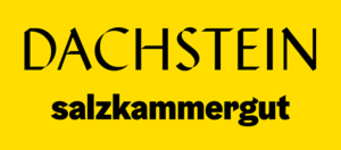Room with a view
The Capital of Culture project "Rooms with a view" is a project by LUCY.D. The aim is to visualise the inspiring landscape and regional handicraft techniques in existing hotels and guesthouses and transform them into sustainable but modern Salzkammergut rooms. The rooms with a view stretch like a "carpet of spots" across 8 towns in the Salzkammergut, from Almtal via Traunsee to Attersee, on to Bad Ischl, into Gosau at Dachstein and to Bad Mitterndorf in Ausseerland.
The rooms are similar in very different ways and are designed to inspire you as a guest to find out more about the Salzkammergut. The design is always based on what is already there and blends in with the old. What they have in common is the attempt to define a contemporary but autochthonous design language typical of the Salzkammergut by using the same sustainable design objects and regional materials in the interior design. It is about the cross-over of design, craftsmanship, old and new.
The 5 themes and the associated design objects are:
Wood & plank cut: Plank cuts with curved, often floral-looking patterns are often found in the architecture of the Salzkammergut. From the 18th century onwards, these cuts were design elements of balustrades and wooden loggias, the so-called "Gwantnergängen". Formally, faces or grimaces can be recognised in the architectural elements. Furthermore, the mystical world and Alpine customs of Perchten and Krampus are the inspiration for the furniture series.
Nature & Raschgras: Who can still relate to terms such as Raschzodn, Reischpatschn or sea grass mattresses today? They are all based on Raschgras, an important raw material from days gone by that was only allowed to be in the limelight for a few generations. Seagrass sedge (Carex brizoides) is the official name of this plant, a common acid grass in the Upper Austrian forests. This material was already used 5000 years ago. The shoes of Ötzi the Iceman were made of Rasch. The name Rasch probably comes from "rustling". The grass is plucked in late summer and must then dry in bundles for at least 2 weeks before it can be processed.
Salt & minerals: In the Salzkammergut there are special minerals, stones such as the red Dachstein limestone and the salt that gives the region its name. Rock salt has been stored here in the Alpine mountains for millions of years, has not been exposed to environmental influences and has been mined in the Salzkammergut for 7000 years. Its special features include its naturalness, mild flavour and fine light reddish colour. This is due to the iron content, among other things. Important minerals and trace elements such as calcium, magnesium and iron oxide make it a speciality.
Hunting & wildlife: Hunting is one of the most primal activities of mankind. Much has changed since Emperor Franz Joseph spent 82 summers of his 86-year life in Bad Ischl in his "hunting lodge" and Empress Elisabeth used par force hunts to defy conventions. The cultural history of hunting is an important part of regional history and goes far beyond the killing of game animals. While it was originally a cultural technique necessary for survival and for a long time the privilege of the nobility, hunting today by many nature lovers.
Textile: A traditional costume "that which is worn" or "the way it is worn" is the entire outfit that is traditionally worn on the body for fashion reasons or to preserve customs. This includes clothing, jewellery, accessories and regalia. In a narrower sense, the word is used for traditional, historical or regional fashion made from regionally produced materials. Traditional costume follows a traditional dress code, but in a broader sense it is also part of the social phenomenon of fashion.
You can find out more about the Capital of Culture 2024 project at https://www.salzkammergut-2024.at/projekte/zimmer-mit-aussicht/





